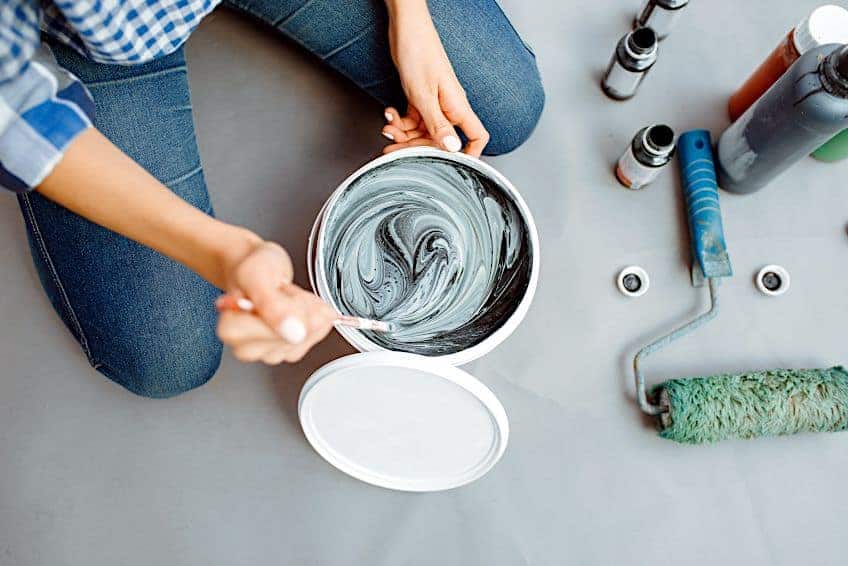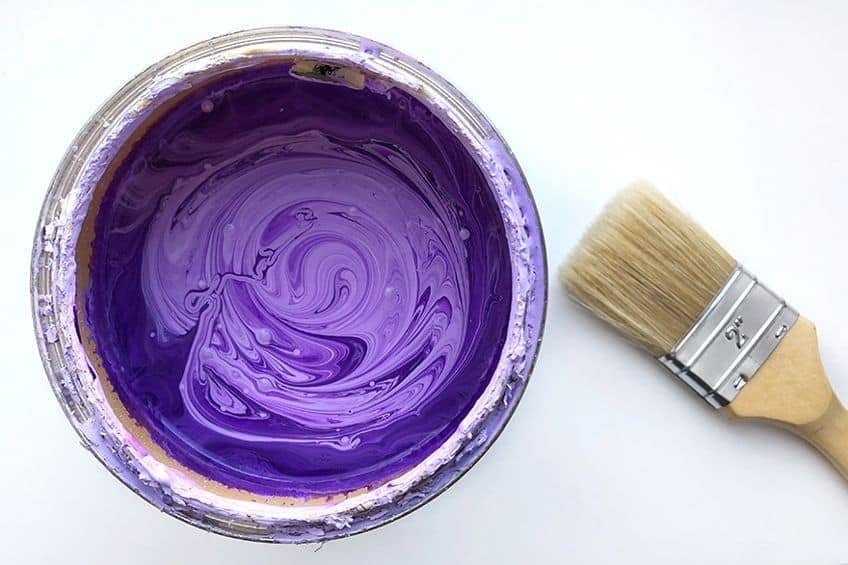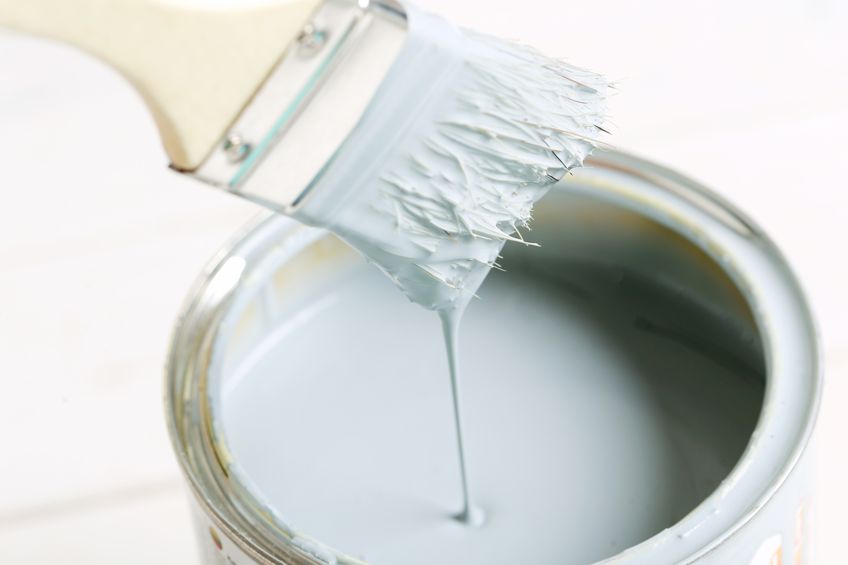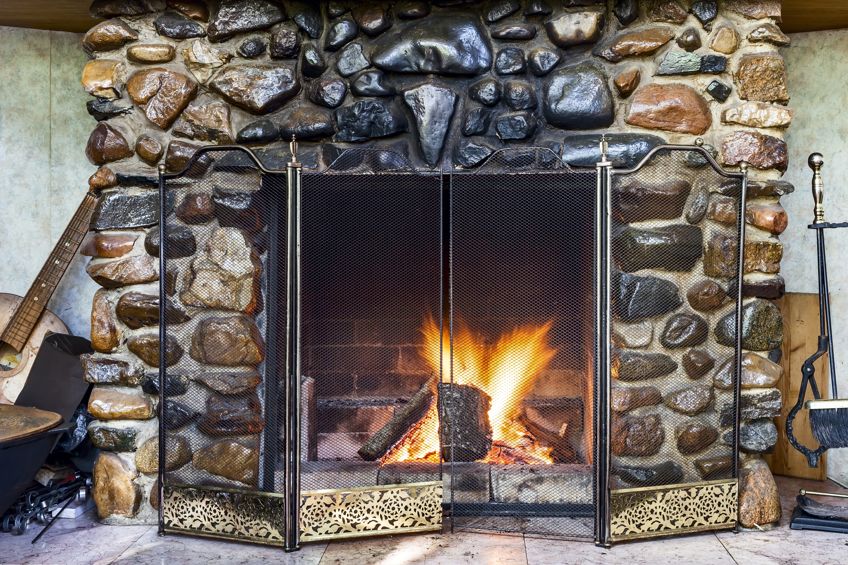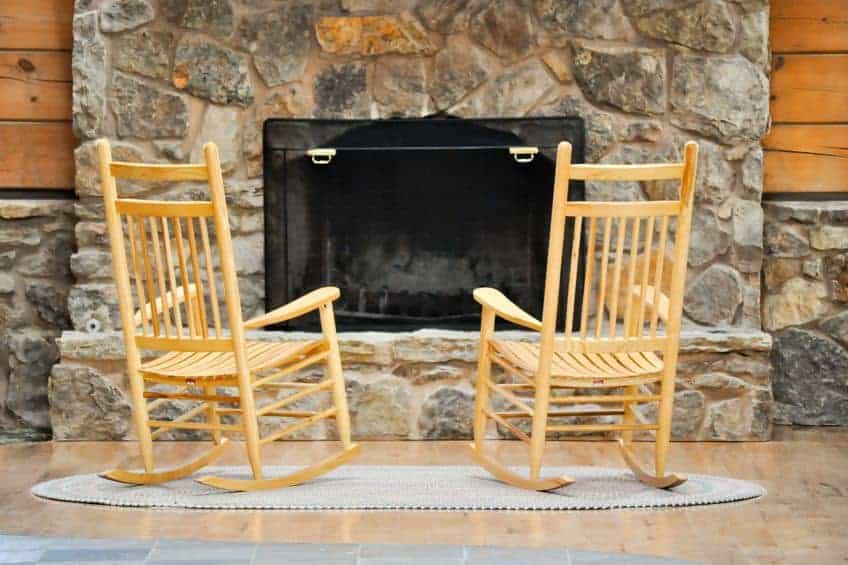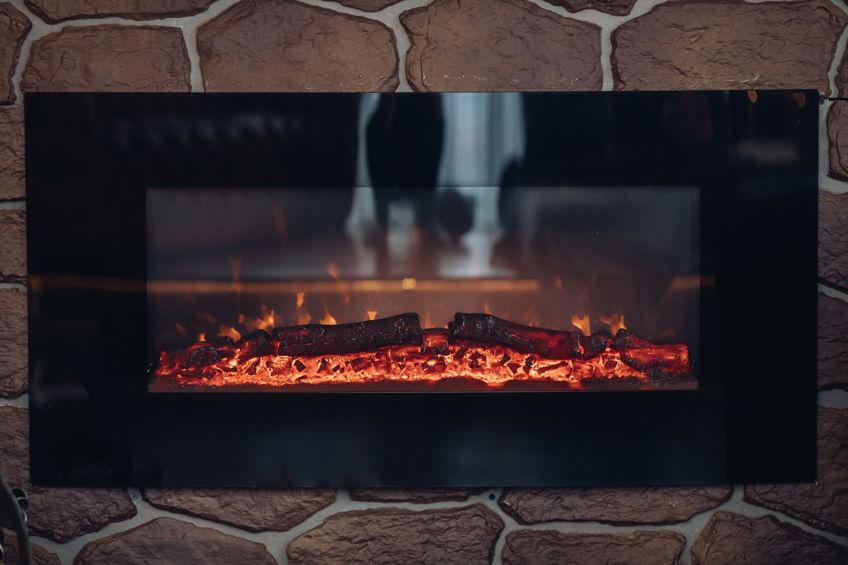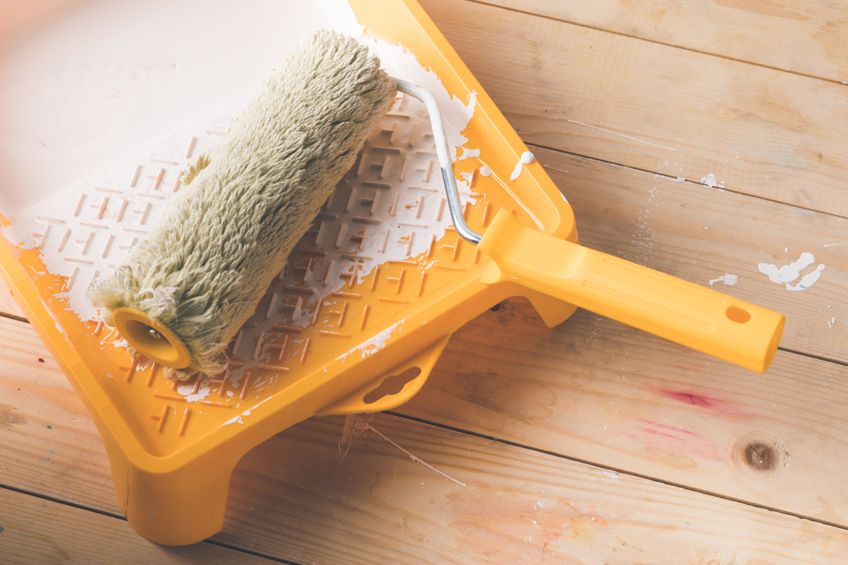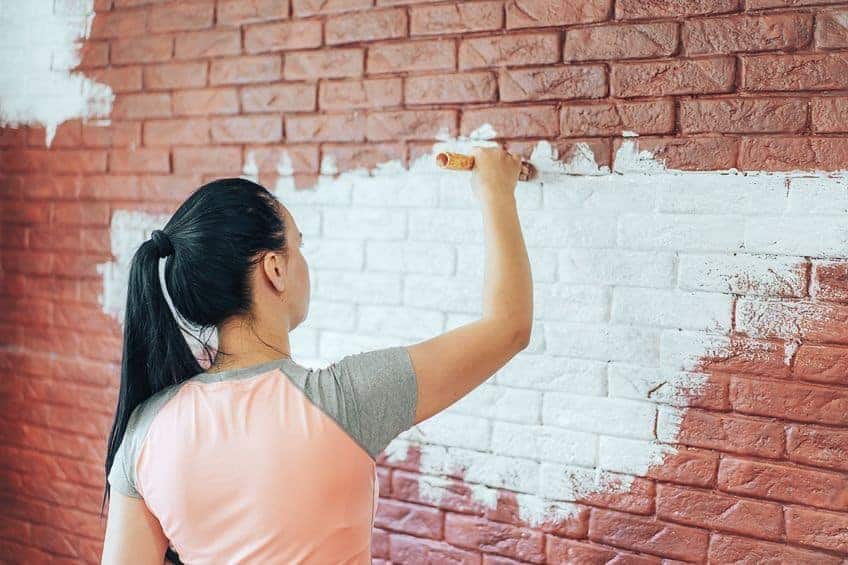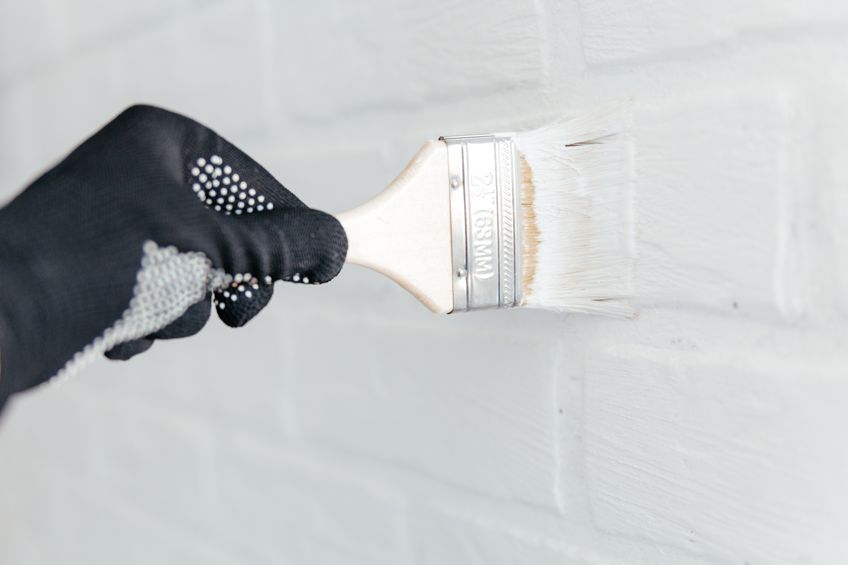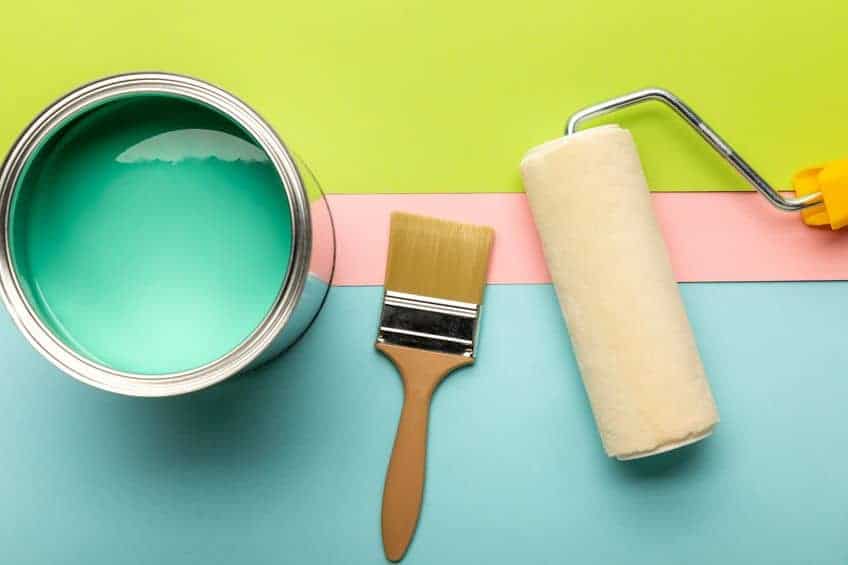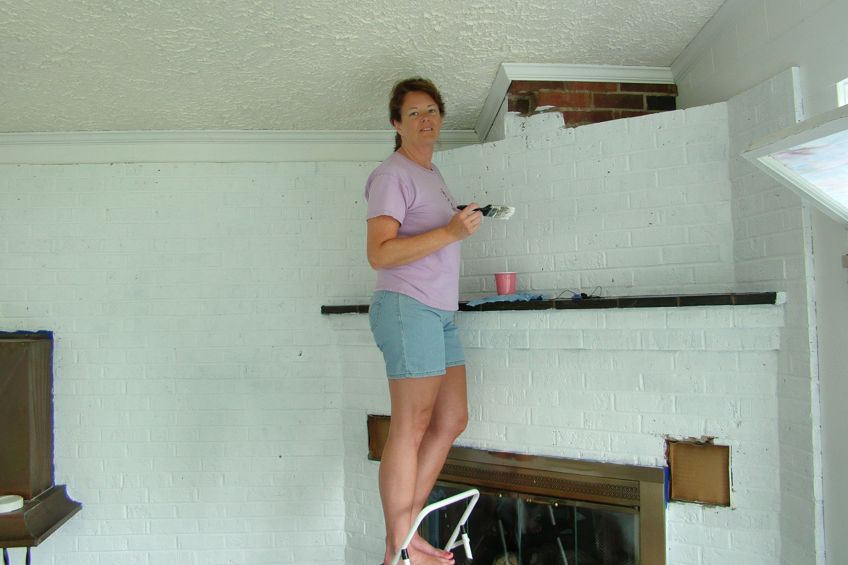Can you Paint a Stone Fireplace? – Best Paint for Stone Fireplaces
This post may contain affiliate links. We may earn a small commission from purchases made through them, at no additional cost to you. You help to support resin-expert.com
Remodeling your living room can be a frustrating yet somewhat rewarding experience. After all, you and your loved ones likely spend an awful lot of time in there, so why shouldn’t get a fresh coat of paint and some new furniture? One part of this space that’s quite easy to overlook or avoided is the fireplace. Painting a fireplace can feel overwhelming, but in reality, painting a fireplace is actually relatively easy given that you have the right tools and that your workplace has been adequately prepared. This being said, can you paint a stone fireplace? What type of paint works best? What is the best way to tackle the painting of your fireplace? Let’s have a look.
Can You Paint a Stone Fireplace?
Yes, even though it may seem strange at first thought, it is entirely possible to paint a stone fireplace if you have the right paint and given that the surface has been adequately prepared. We have been painting stone for thousands of years with paints that were nowhere near as reliable or consistent as the ones we have today.
It might be strange considering that most fireplaces can reach up to 1000 to 2000 degrees Fahrenheit. Even though these temperatures are greatly reduced on the outside of a stone fireplace, the paint used to coat them still needs to be able to withstand an incredible amount of heat, not to mention the fact they need to able to expand and contract along with the stone itself.
Considering the fact that the paint you choose will be in close proximity to open flames regularly, it should be highly resistant to the effects of heat and be able to retain its shape quite well too. All of this can be a lot to ask of paint, so the preparation of the stone surface should be carefully done to ensure the best adhesion and finish quality.
Besides preparation and paint type, you should make sure that you have everything you need for the task ahead. Unlike painting wooden surfaces, painting surfaces like brick and cobblestone can be a bit trickier, especially if you intend on painting them with a brush and roller instead of a paint sprayer.
This being said, you should ensure that to have a brush and roller of the correct size and texture when painting your stone fireplace.
What Paint Type Should Be Used to Paint a Stone Fireplace?
What is the best paint for stone fireplace surfaces you ask? As we mentioned previously, there are a whole host of characteristics that a paint needs to have to ensure that it lasts on the surface of your fireplace. It needs to be resistant to heat, able to adhere to stone well, and it needs to be able to expand and contract as required. Paints like these need to have a high resin content to ensure their elasticity and heat resistance. One paint type that has quite a high resin content and typically has decent resistance to the effects of direct heat is acrylic paint. Acrylic paint is arguably the best paint type when it comes to coating interior and exterior stone surfaces.
There are other paint types that are capable of working on stone too. Both oil-based paints and enamel-based paints can be used to paint stone surfaces, with the latter being slightly more reliable. Enamel-based paints are so resistant to the effects of high temperatures that they’re actually used to coat the engine bays of cars, but they can be quite expensive, especially in large volumes. This being said, acrylic paint remains one of the best overall choices for use on stone surfaces thanks to its affordability, availability, and ease of use.
If you are by the means to use an enamel paint though, we highly recommend using a high-quality primer not only to ensure that your paint adheres correctly but also to ensure that your paint looks good.
What to Consider When Painting Stone Fireplaces
As we mentioned previously, your paint choice is extremely important when painting a fireplace. This isn’t only due to the fact that it can get quite hot, but it will also determine what this permanent fixture in your home looks like for the foreseeable future. This being said, let’s have a look at a few things you should keep in mind when you’re choosing a paint for your stone fireplace.
Heat
This is probably at the forefront of your decision-making if you’re painting stone fireplace units, especially if they’re located indoors. The last thing you want is for your paint to start peeling off, or even worse, catch fire.
Choosing a paint that has been designed for exposure to direct heat and flames is advised, whether it be latex, acrylic, or enamel-based paints.
Type of Stone
While it’s reasonable to assume that stone is stone, there is a wide variety of stone materials out there that a fireplace can be made of. Painting stone fireplace units requires an understanding of the type of stone you are dealing with, whether it be cobblestone, brick, granite, or limestone, you should know what type of paint works best on the stone in question and how to prepare the surface correctly.
Elasticity
A painted stone fireplace needs to be coated with a paint that is flexible as well as durable. Remember that stone expands when exposed to heat, and therefore the paint that coats it needs to be able to expand and contract with it.
It’s for this reason that most painted stone fireplace units are coated with acrylic or enamel paint.
Longevity
Choosing a paint for stone fireplace units is only half the battle, keep in mind that you will still have to clean, prime, and apply the paint. Once the paint has been applied, the last thing you want is for your coat only to last one winter before it needs to be redone. We recommend choosing high-quality paint for the job to ensure that your coat lasts for a few years (at the least).
Type of Finish
Choosing a paint for stone fireplace units means that you will also face the choice of which finish you’d like. The type of paint finish you choose not only affects the aesthetic impact of your fireplace unit but, depending on how often you use it, it could also affect how long it looks last.
We recommend choosing a finish that is best suited to how frequently you use your fireplace and whether it is situated indoors or outdoors.
How to Paint a Stone Fireplace
There are two choices when it comes to painting your stone fireplace, both of which are relatively easy to do and don’t require an awful lot of tools or expertise to pull off. For this short tutorial, we’re going to detail how to paint your stone fireplace white since it’s a popular choice and the least expensive color. However, these techniques can be applied to virtually any color and might even look better with more vibrant hues!
Painting Your Stone Fireplace: Step-By-Step Instructions
Painting your stone fireplace in this context means getting out your brush and roller, dipping them in some paint, and getting to work. Be certain that you execute the preparation stage well, and that you have everything needed before you begin. Keep in mind that stone can be tricky to paint, so multiple coats of paint may be needed to achieve your desired effect. Here are a few things you should have to get started:
- Paint
- Primer
- Brush and/or roller
- Painter’s tape
- Tarp or old newspaper
- Scrubbing brush
- Paint tray
- Gloves
- Face mask
Step 1: Prepare Your Workspace
Preparing your workspace is one of the most important steps in any painting exercise, but how do you go about it? To get started, lay your tarp down at the base of your fireplace and secure it with some painter’s tape to ensure that none of it gets on your flooring. Next, using some painter’s tape, mask up the areas connecting the fireplace to the surrounding walls.
Once the area around your fireplace has been covered, ensure that your workspace is well-ventilated by making sure that you have constant airflow both into and out of the space. Finally, ensure you are prepared for the task ahead by putting on your gloves and face mask. This is extremely important, especially if you’ll be working indoors.
Step 2: Clean Your Fireplace
This part can be difficult, especially if you’re painting a sandstone fireplace. The goal here is to ensure that the surface is clean so that your primer and paint will adhere correctly. How do you clean a stone fireplace? With some good old-fashioned soap and water! Simply get a bucket of soapy water, get your scrubbing brush, and get to cleaning. Be sure to reach the recesses between the stones and the cement bits holding them together. This can be difficult if you’re painting a sandstone fireplace as scrubbing too hard could produce more dust. This being said, work carefully and ensure that your fireplace unit has been thoroughly cleaned.
Once you’re happy with the job you’ve done cleaning, allow the stone to dry completely before moving on to the next step in the process.
Step 3: Prime Your Fireplace
Priming your surface is one of the most important steps in painting stone in addition to a thorough cleaning. Unless the stone has been sealed, stone surfaces are porous, which means that even though they have high surface friction, paint can fail to adhere to the surface. Unless you have a paint sprayer on hand, we recommend using paint on primer for your stone fireplace. Before you pour some primer out into your painter’s tray, be sure to give the container a good shake. This will ensure that the heavier particles are reintroduced back into the mixture. Next, pour some primer out into your painter’s tray and get some on your brush and/or roller. When applying your primer be sure to get it not only on the stone surface but on the spaces in between too.
The best way to do this is by applying the majority of the primer with your roller and filling in the recesses between the stones using a paintbrush. Once you get started, follow the width of your fireplace, working from one end to the other. If your fireplace is particularly tall, you can start applying your primer from the top and work your way to the bottom. Once you’re happy with the job you’ve done applying your primer, allow it to set and dry from the manufacturer’s recommended time period before moving on to the next step in the process.
If you would like to apply an additional coat of primer (which could be necessary depending on the type of paint you’ve chosen to use) then you should wait for each coat to try beforehand.
Step 4: Paint Your Fireplace
Painting your workpiece is a fairly straightforward process and isn’t unlike applying your primer. Just as you did when you prepared your primer, give the container of paint a good shake to ensure that any heavier particles that have settled at the bottom of the can are reintroduced into the mixture. Once done, pour some paint out into your painter’s tray. Once you have some paint in your painter’s tray, get your clean roller, and get some paint on it. Just as you did with the primer, paint the larger stone faces with the roller and use your paintbrush to fill in the recesses between them. Ensure that you apply your paint evenly in each case, or you could end up with a blotchy texture.
How you tackle painting your fireplace depends on the dimensions of the unit and the size of the work area you find yourself in. If your fireplace is relatively small and close to the ground, you can probably get away with painting it from one side to the other (following the width). If your fireplace is quite tall and has a stone face on the chimney as well, we recommend starting at the top and working your way down. Once you’re happy with the job you’ve done painting, allow the paint to try for the manufacturer’s recommended time period before applying any additional coats or attempting to make use of your freshly painted fireplace.
If additional coats are needed, simply repeat this step and allow the paint to dry for the manufacturer’s recommended time period once more.
How to Whitewash Your Fireplace
Whitewashing is a process that can be used instead of painting with a conventional brush and troller. Not only is it easy to do, but it can be quite fun to paint with a rag instead of using a brush and roller. How do you whitewash your fireplace you ask? Well, you will need everything you used to paint your fireplace (including following the preparation steps), with the only difference being that you don’t need to prime your surface. You will also need a staining pad, access to water, and a small container. The following is a complete list of what you will need:
- Paint
- A small container
- A staining pad
- Painter’s tape
- Tarp or old newspaper
- Scrubbing brush
- Gloves
- Face mask
Step 1: Prepare Your Whitewash Solution
Before we get to whitewashing, you need to prepare the mixture. Start by pouring equal amounts of paint and water into your small-sized container and mixing them together until you’re happy with the consistency of the mixture. You should have a nearly opaque tint to your paint at this point, but you can add more paint or more water as you see fit.
Once you’re happy with the consistency of your mixture, you can move on to the next step in the process.
Step 2: Whitewash Your Workpiece
Whitewashing your workpiece is an easy process. Dip your staining pad into the mixture and start applying the mixture directly to the stone surface. As the name suggests, this creates more of a wash than a surface coating, which means you’ll still be able to see some of the contours of the stone through the paint. This creates a look similar to that of sun-bleached rock or wood, which tends to work well in any aesthetic or space.
Because the water content of your paint is higher now, it could dry a bit quicker than you’re used to, so it’s important to work efficiently and plan your approach in advance. Once you’re happy with the job you’ve done, allow the paint to dry completely. As we mentioned previously the drying time could be accelerated due to the increase in water content in your paint. Once the paint has been dried, additional coats may be applied as needed.
Now that you know if you can paint a stone fireplace, how to go about it, what types of paint you can use, and the properties a good paint for stone should have, it’s time for you to get out there and put your newfound knowledge to the test. Remember to wear the appropriate personal protective gear and ensure that your workspace is well-ventilated when working with paint.
Frequently Asked Questions
What Are Some Good Painted Stone Fireplace Ideas?
Looking for painted stone fireplace ideas? Since the rustic theme has made a noticeable comeback in recent years loads of people are scrambling for painted stone fireplace ideas. Some of the most popular choices are a stone wash, white, obsidian, and beige.
What Is the Best Stone for a Fireplace?
There are loads of options to choose from when selecting a stone for your fireplace unit. However, if you’re looking for a stone that will be low maintenance and won’t cost you too much, granite is arguably the best stone for the job.
How Long Do Stone Fireplaces Last?
A stone fireplace is one of the best investments you can make for your home. Not only are they functional, but they provide an air of class and sophistication to any space. They are also quite robust, with most being able to last for over 100 years!
Can You Paint a Stone Fireplace With Latex Paint?
There are loads of paint options out there for stone surfaces, but not all of them have the same texture, color quality, or resistance to damage. This being said, can you paint a stone fireplace with latex paint? Yes, not only does it work well if the surface is prepared correctly, but it is capable of lasting for nearly a decade if the paint is cared for and maintained correctly.


